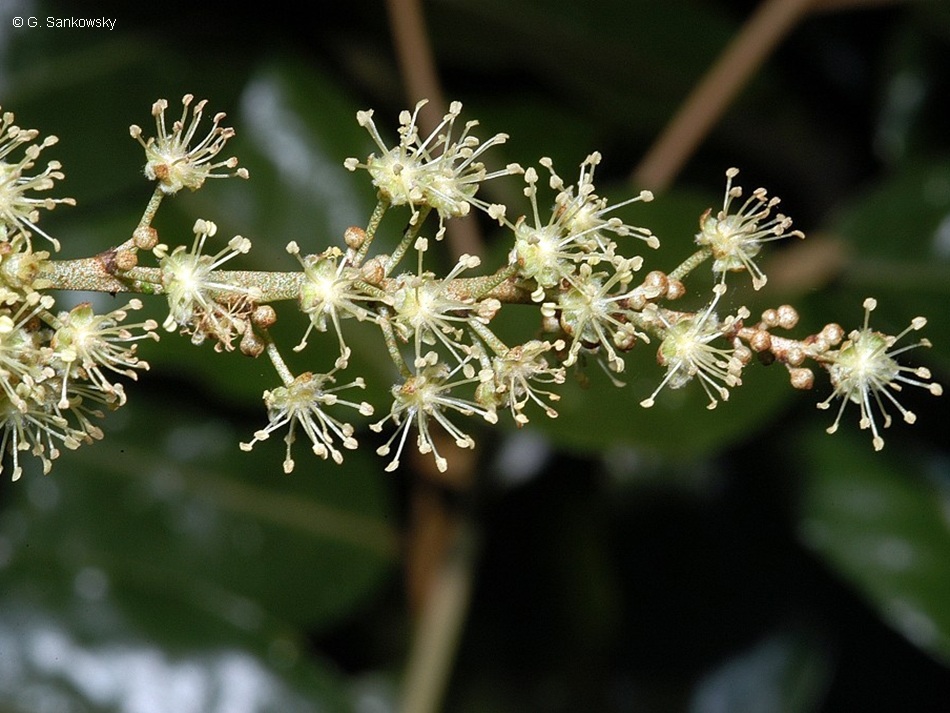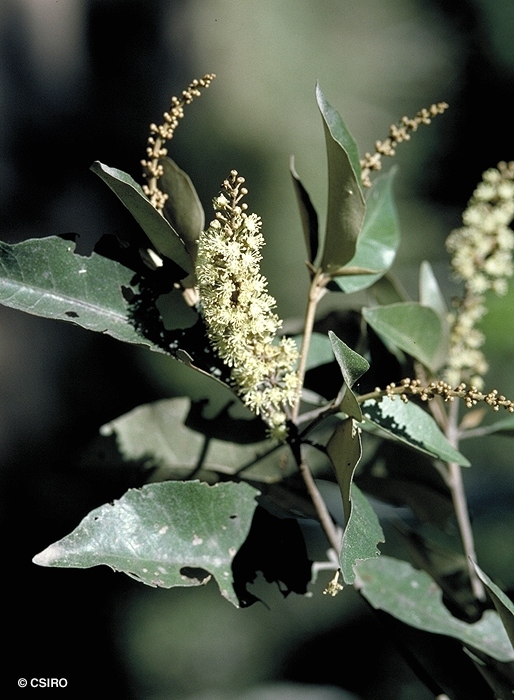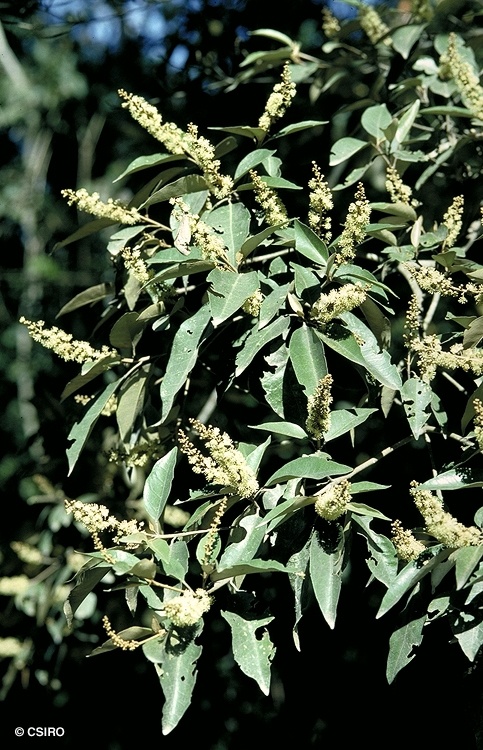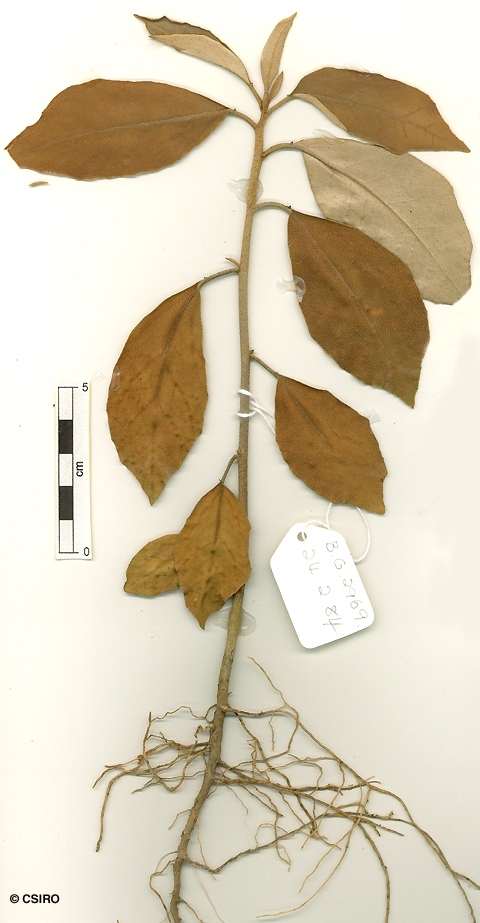Australian Tropical Rainforest Plants - Online edition
Croton insularis Baill.






Baillon, H.E. (1978) Adansonia 1: 217. Type: Pancher, 1er env., n. 360 N.-Caled., in collibus. Vieillard, 1er env., N.-Caled. Herb. propr. (1855-60), n. 1136, 1137, 1138, Balade.
White Croton; Cascarilla Bark; Native Cascarilla Bark; Queensland Cascarilla; Queensland Cascarilla Bark; Silver Croton
Blaze odour fragrant and spicy. White granular stripes normally visible in the outer blaze.
Inflorescence and calyx clothed in silvery or coppery lepidote scales. Male flowers: Flowers about 3 mm diam. with about 11 or 12 stamens. Female flowers: Flowers about 3 mm diam. Ovary densely clothed in silvery or coppery lepidote scales in the female flowers.
Capsules about 5-7 mm diam., clothed in silvery or coppery lepidote scales.
Cotyledons elliptic, about 8-10 mm long. At the tenth leaf stage: leaf blade white on underside; both the upper and lower surfaces of the leaf blade, young shoots, and stem clothed in flat scales each with a central red gland; 1 or 2 peg-like glands visible near the junction of the petiole and the leaf blade; oil dots visible with a lens. Seed germination time 13 days.
Occurs in CYP, NEQ, CEQ and southwards as far as coastal central New South Wales. Altitudinal range in NEQ from 400-1100 m. In NEQ grows in the drier rain forests, often associated with Kauri Pine (Agathis robusta). Also occurs in Vanuatu and New Caledonia.
When injured, the bark gives off a very pleasant aromatic odour resembling that of cascarilla, a West Indian species of Croton whose bark was once was as a tonic. The Australian species has been suggested as a substitute for the West Indian material but there seems to be no record of its being used here. Cribb (1981).





